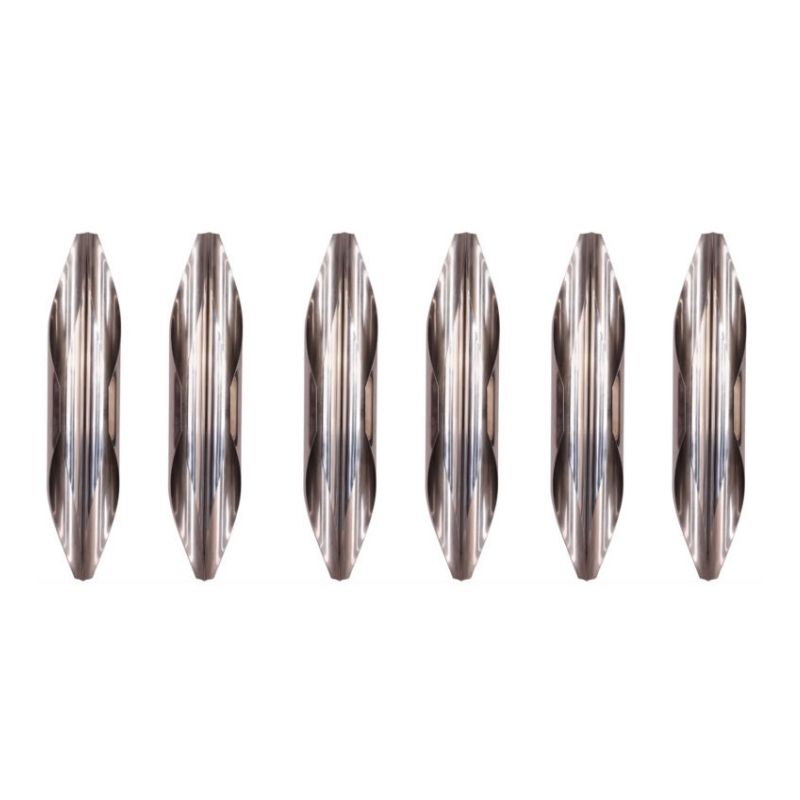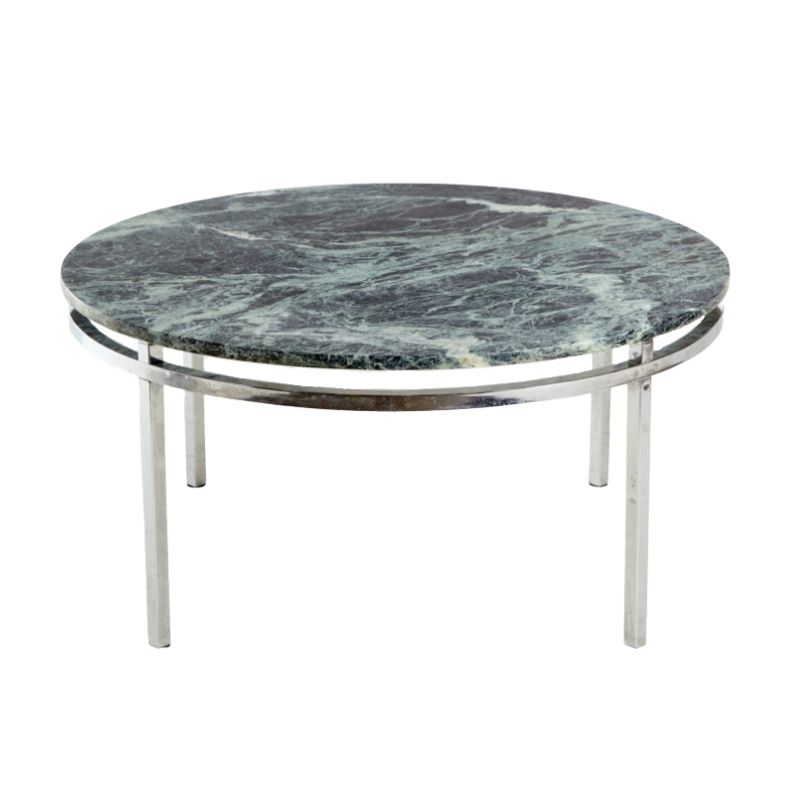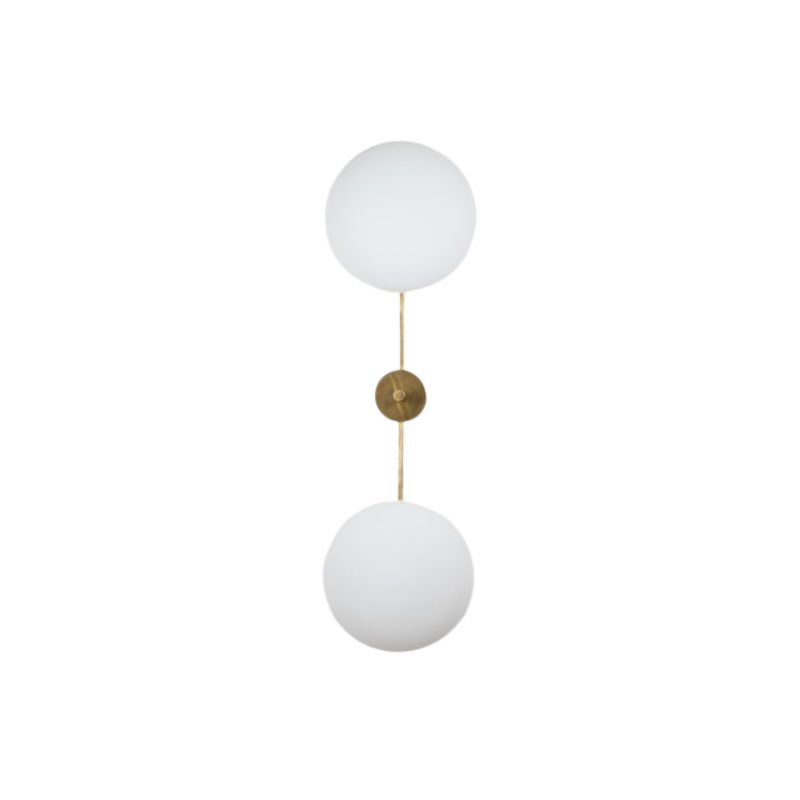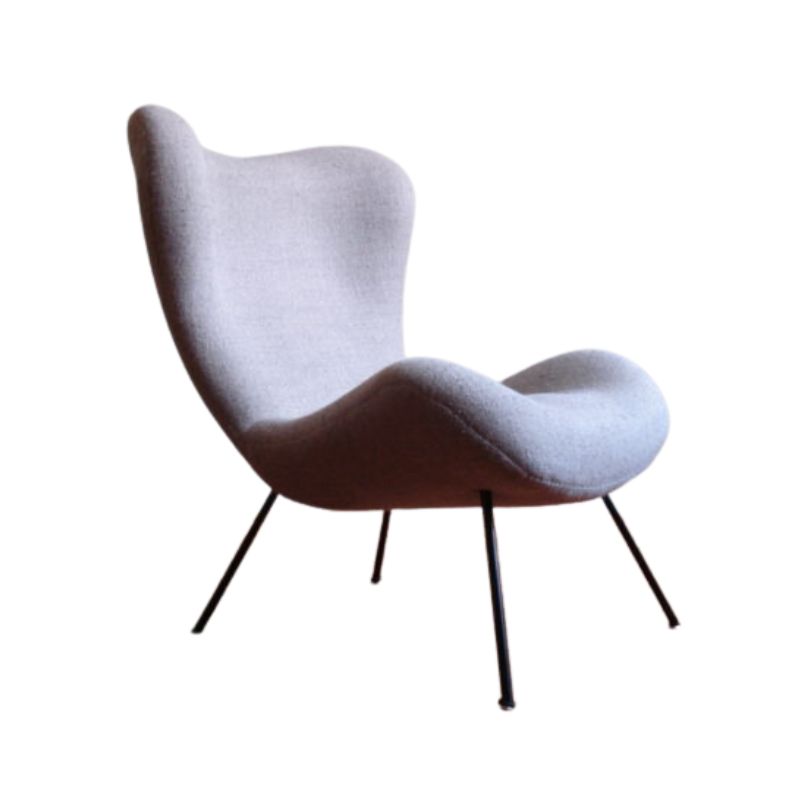After recently purchasing a quality danish rosewood dining table I am trying to identify who designed and produced it. Numerous Google searches and a thorough review of the Danish Design Index have taken me no further forward. I am therefore turning to this Forum for assistance, hoping to tap into the expertise and knowledge base of its members/contributors.
I have posted several photos below that hopefully serve to highlight some of the key distinguishing features of the table. In particular I would point to:
- the two halves of the table top and extension pieces join together via long tongue and groove joints rather than the usual locator pins or small tabs.
- grain of veneer to table top and extensions runs west/east rather than north/south
- both of the two extension pieces are of the butterfly variety
- the apron gently curves downwards into each of the 4 leg locations
The "under carriage" housing the extension pieces is impressed with Made in Denmark.
The table is 120 cm diameter and the extensions are both 40cm
The table came paired with Erling Torvits chairs which I was informed were purchased together by the previous owner in 1964
Any help would be very much appreciated







Interesting, quality, looking table with a late 1950’s early 1960’s design feel to it. Whilst a new contributor to the forum I have been involved and interested in Danish mid century furniture for many years.
There seems to me a few pointers to Arne Vodder and Helge Sibast including the apron/leg design but I don’t recall either using butterfly extensions or tongue and groove interfacing on the table top and extension pieces.
A more likely attribution is Poul Volther and Borge Mogensen. I understand a few items were designed in collaboration between the two and I suspect your table could well be one such piece. Both used variations of the apron/ leg configuration seen on your table, Volther used the extended T& G jointing and Mogensen butterfly extensions.
Your Erling Torvits chairs were produced by Soro Stolefabrik and Poul Volther designed for Soro…so I speculate that the manufacturer Soro Stolefabrik may be the common factor between your table and chairs.
Perhaps other contributors maybe able to corroborate my opinion or provide an alternative more authoritative views.
Interesting, quality, looking table with a late 1950’s early 1960’s design feel to it. Whilst a new contributor to the forum I have been involved and interested in Danish mid century furniture for many years.
There seems to me a few pointers to Arne Vodder and Helge Sibast including the apron/leg design but I don’t recall either using butterfly extensions or tongue and groove interfacing on the table top and extension pieces.
A more likely attribution is Poul Volther and Borge Mogensen. I understand a few items were designed in collaboration between the two and I suspect your table could well be one such piece. Both used variations of the apron/ leg configuration seen on your table, Volther used the extended T& G jointing and Mogensen butterfly extensions.
Your Erling Torvits chairs were produced by Soro Stolefabrik and Poul Volther designed for Soro…so I speculate that the manufacturer Soro Stolefabrik may be the common factor between your table and chairs.
Perhaps other contributors maybe able to corroborate my opinion or provide an alternative more authoritative views.
Really nice to have you here!
I think that's a really good shout on Sorø Stolefabrik. I've personally seen tables with that tongue from them, and if you haven't @danish-nut , it may seem like a silly suggestion but I think the makers mark is on the upper side of the extension struts (against the table top), so if you have not extended it out all the way to check there for a makers mark, it may be worth it.
Kind regards,
Kyle
Thanks Curious1 and Kyle for your insights and input.
That all makes a lot of sense. It would be great if anyone else is able to corroborate the suggested attribution of Volther/Mogensen and I will certainly fully extend the table and check for the markings on the upper side of the extension struts. Can you recall Kyle the designer of other tables you have seen that incorporated the near full length tongue and groove joint on the table top as that would enable me to follow other lines of investigation?
Again many thanks Curious1 and Kyle for your insights.
There are many examples of dining tables from Brande Møbelfabrik with a similar construction as the referenced table with tongue and groove in relation to additional plates. I have so far not been able to find other known and lesser known manufacturers of dining tables that have this solution.
The attached photo shows an example from a similar round dining table from Brande Møbelfabrik.
Just an input that we might be able to search further from 🙂

Thanks for your inputs Leif and Vildbjerg.
Certainly seems that Brande Mobelfabrik could potentially be the producer as they used the tongue and groove joint on the table tops and what looks like butterfly extension pieces. It would be more conclusive of course if there was a match also on the apron shaping also.
The table top tongue and groove is segmented Leif and in 2 parts. I will photo graph and add later.
Would be great if anyone has access to Brande catalogues from the 50's/early 60's to see if there is a completely definitive match.
As always further input would be much appreciated.
So the key here is a strategy for breaking the task of identification down by winnowing the enormous number of possibilities. And that is to avoid focusing on design elements and instead focus on quirks of construction so you can find the maker, and then HOPE you can find the designer. The way the leaves join is a quirk of construction and you can expect to see that quirk used on many tables produced by the company regardless of designer. I call this a workshop signature. And there may be multiple companies that did similar or the same. But what I know is that it is not a common detail on danish tables in general and it happens to be a useful signature because often it gets photographed. So it can be useful to take a broad survey of danish tables in general to make a list of potential makers and then you can focus your time into deeper research.
That a maker offered a butterfly leaf is not a construction element per se. (Maybe some detail of it is and that might become helpful at some point). And the appearance of the apron has nothing to with construction, that is fully the designer’s domain. And the design of this table is too anonymous for anyone to look at it and without prior knowledge predict that it will turn out to be a certain designer. There are thousands of designers would -could- have designed it.
Does that make sense?
oh and I have a Brande Møbelfabrik catalog and it isn’t in there but that doesn’t mean anything as only a tiny percentage of known Brande production is in it. Finding a catalog might be possible but you really need to know first that you NEED a Brande Møbelfabrik catalog because it could take a lot of work and expense to get a few and discover nothing. Again this is why you need a strategy to work your way to am identification.
Brande Møbelindustri also made similar leaf mating joinery. (Yes, Brande Møbelfabrik and Brande Møbelindustri were two different companies).
And this is why we need good photos of EXACTLY what the leaf mating joinery looks like. With luck you might even narrow it to precisely one company.
Leif,
Really appreciate your last post. Your suggestion to focus on trying to narrow down the maker in the first instance makes perfect sense. Similarly your recommendation to home in on contruction quirks or workshop signatures as you term them is clearly an excellent strategy for trying to identify the maker of my table.
It occurs to me that the methods of jointing more generally would be an aspect of construction that would help differentiate between makers. In that vein perhaps the flanged disc and bolt used to join the legs to the apron might be one such distinguishing characteristic? I have enclosed another photo of that and wonder if you have any thoughts on that?
Also attached are 2 images of the segmented T & G joint on the table top. The centrally located gap between the 2 tongues is approximately 8 cm wide. Do you know if this is a Brande Mobelfabrik or Møbelindustri trait or another maker that this would be characteristic of?
Your further thoughts would be much appreciated as would input from other contibutors.



@danish-nut. Could you post a pic of the hinges on the extension leaves? Possibly with the leaves partially open and fully open ? I know hinge parts can be generic but sometimes different types can be specific to certain makers. Just a thought...
Knowledge shared is Knowledge gained
@danish-nut. Did more searching into Soro Stolefabrik tables. Attaching image of bolt detail from a Model 62, designed by Henry Kjaernulf ( according to DFI; info from Mobilia 1960). This model table also has different versions of tongue & groove detail.

Knowledge shared is Knowledge gained
Lexi,
Thanks for your image of the Soro model 62 table leg that shows the same flanged disc as on my table. Do you know if this was type of fastener was used exclusively by Soro?
As requested I have attached additional images showing the hinge on the extension pieces plus a photo of the tongue joints on one of the extensions, which shows a total of 6 on each versus 2 on the table top itself. Eager to learn if this additional input sheds any further light on the table's maker.
Again appreciate the effort you Lexi, Leif, Curious1, Kyle and others have put into assisting in pursuing this quest.



@danish-nut. Thank you for the extra images. Standard butt hinges .
If I stumble upon a table with the same flange piece I will be sure to post it here.
At this point in time you will just have to spend a while on the web clicking into dining tables and hopefully images of the leg joints are included in pics !!
Knowledge shared is Knowledge gained
If you need any help, please contact us at – info@designaddict.com









